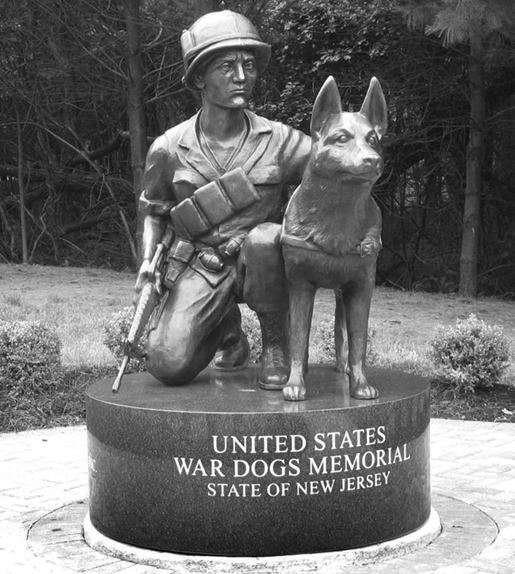History
Dogs have been used in war efforts for thousands of years and across many cultures, including the ancient Egyptians, the Persians and the Greeks. The Roman Empire would dress dogs up in spikes and collars to use them in battles, while Napoleon would chain the dogs to the walls of Alexandria to warn of incoming enemies.
By the early 1900s, many European countries were taking advantage of the canines’ heightened senses, using them as scouts, as well as messengers. It wasn’t until World War II that the United States began to officially train dogs as well (although they had used dogs more informally in previous wars). At this time, the welfare of the dogs was not a strong concern. For example, during World War II, the Soviets tried to train “anti-tank dogs”. The dogs would have a bomb strapped to them as well as have an antenna attached to their backs. They would then be trained to run underneath enemy tanks, bending the wire and causing the bomb, the tank, and themselves to explode. To train them to run under tanks, the dogs were starved, then food was placed under Soviet tanks for practice. Luckily, this method did not succeed: the animals, having been trained with Soviet tanks, would return to the familiar smells rather than approach the enemies tanks, returning the bombs to the owners.

Dog being trained for an anti-tank mission. Photo from: http://www.soviet-empire.com/1/military/anti-tank/dog_mine/anti-tank_dog_mine_001_629x383.php
Welfare only really began to be an issue after the Vietnam War. Of about 5,000 dogs sent to Vietnam, only about 200 returned. Many died early upon arrival due to the high heat, with little care available to them. However, at the end of the war, about 2,700 dogs were turned over to the South Vietnamese army, an astounding 1,600 were euthanized, and many were simply abandoned.

It was this particularly horrific act that would lead to the lobbying for legal rights to be given to the military working dogs. Many of the soldiers who had fought alongside the canines in Vietnam became advocates for the cause. It was the persistence of these groups, as well as the plight of a military dog named Robby, that led to Robby’s Law being enacted in 2000.